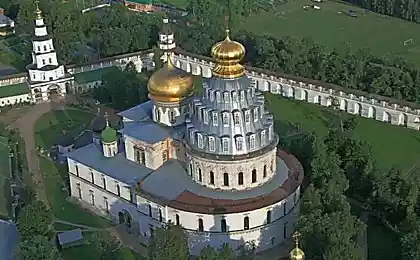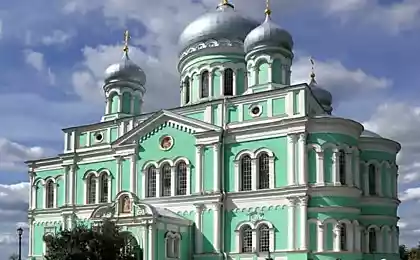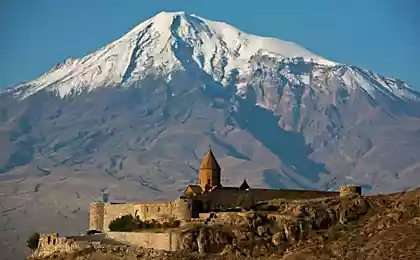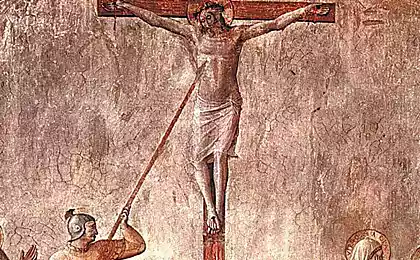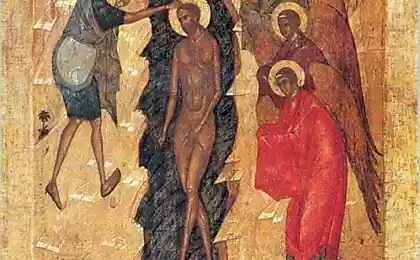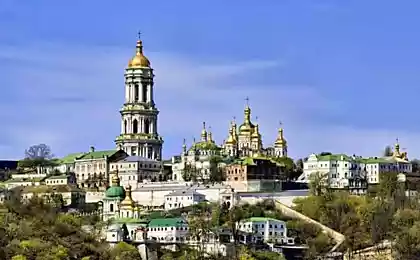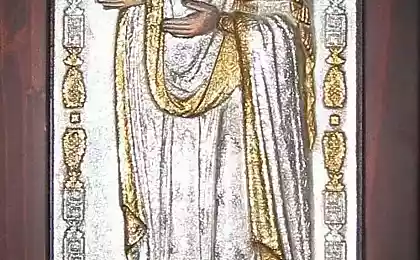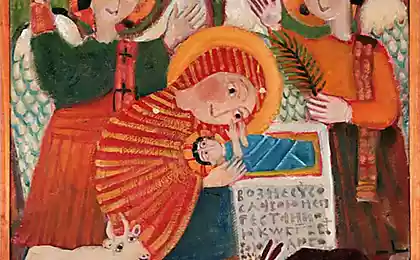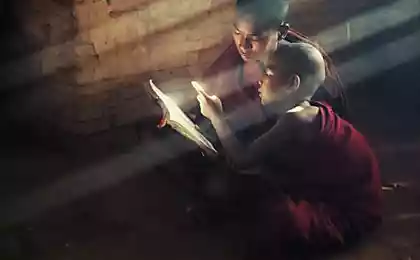14743
Where Jesus Christ was born (39 photos)
The birth of Jesus is saying a lot in the Gospel of Matthew and Luke.
But not all have seen these places, and certainly does not happen.
Let us arrange a tour of one of the oldest churches in the world.
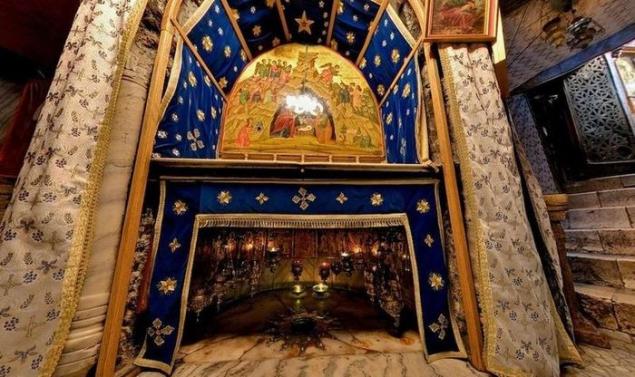
Basilica of the Nativity - one of the oldest churches in the world. The building was built over the cave where, according to legend, was born Jesus of Nazareth, but because this place is considered sacred to Christians.
The structure is actually a combination of two churches, and the place itself is located at the bottom of the birth of Jesus - in the cave of the Nativity.
The birth of Jesus is told in the Gospel of Matthew and Luke. Matthew says that Mary and Joseph were from Bethlehem, and then moved to Nazareth because Herod to kill all the babies. And Luke indicates that Mary and Joseph were from Nazareth, and Jesus was born in Bethlehem, while they were in town for a special occasion. Theologians consider these two stories as conflicting, but Matthew is considered more reliable source. However, in both versions, Jesus was born in Bethlehem and raised in Nazareth.
Star of Bethlehem and the altar
In Roman Catholics have a unique Altar in Awe "manger of Jesus." Catholics also set under the altar of the Nativity silver star. To the enjoyment of the nave have the right to both Catholic and Armenians.
1. The area of the Nativity; 2. Gates of humility; 3. Nave; 4. The High Altar and Greek Orthodox Basilica (iconostasis); 5. Stairs to the cave; 6. Cave Nativity; 7. Franciscan monastery; 8. Franciscan yard; 9. Cave of St. Jerome; 10. Church of St. Catherine; 11. The Greek Orthodox monastery; 12. Greek Orthodox yard; 13. Armenian yard; 14. Armenian monastery.
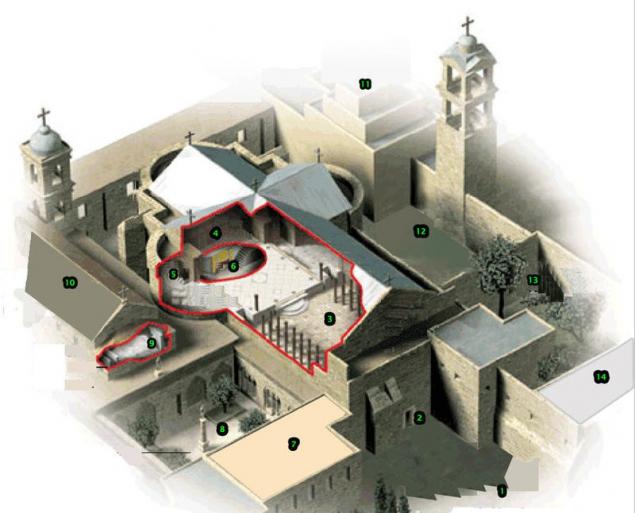
Aerial view of the Basilica of the Nativity in Bethlehem.
Basilica of the Nativity - the oldest still-functioning church in the Holy Land, where, according to legend, Jesus Christ was born. Its construction began in 326 BC The current church was built during the reign of Byzantine Emperor Justinian. In 529, the basilica was severely damaged during the rebellion of the Samaritans. Patriarch of Jerusalem, sent to the aid of St. Sava Justinian, and the architect, sent by the emperor, demolished the church and built the one that stands to this day.
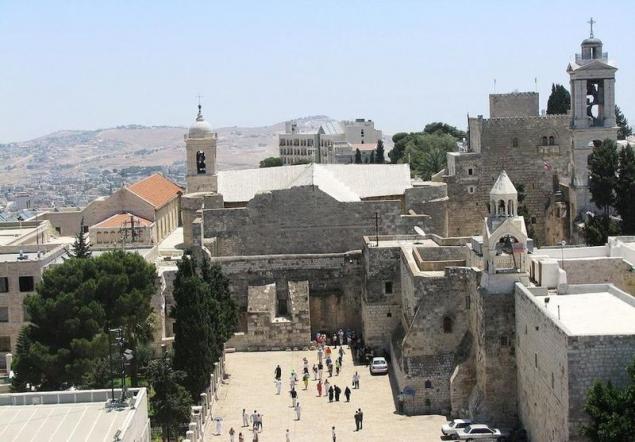
Plaque
Today, the church is under the control of three Christian denominations - the Armenian Church, the Roman Catholic Church and the Greek Orthodox Church.
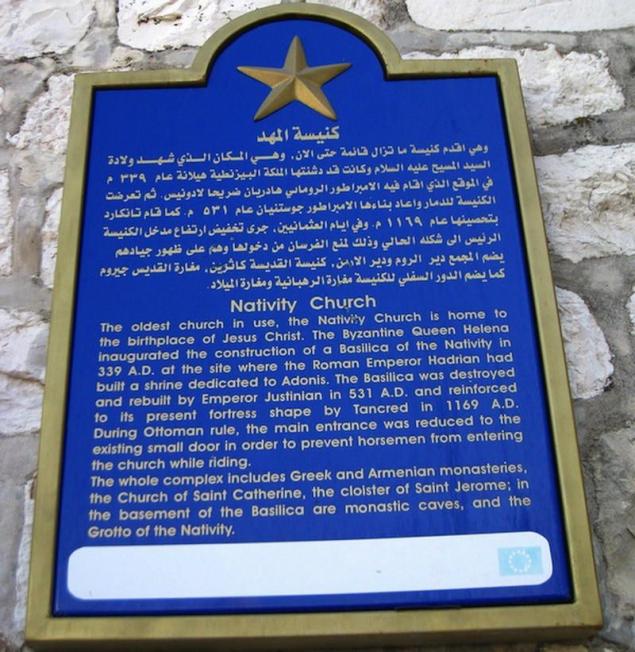
Black and white photo of an old church.
Powerful external walls of the church, similar to the walls of the fortress, talk about it long and complicated history. For centuries, the church was one of those places for which were constantly at war. It won and defended a variety of military, including Muslims and Crusaders. The facade of the Basilica of the Nativity of Christ surrounded by high walls three monasteries: the Franciscan from the north-east side, Greek Orthodox and Armenian Orthodox from the southeast.
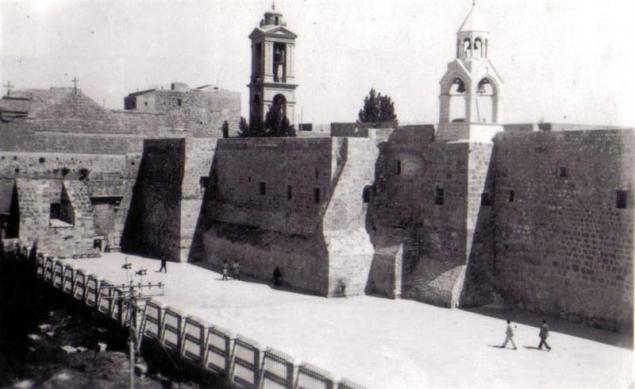
Entrance to the famous Basilica quite nondescript
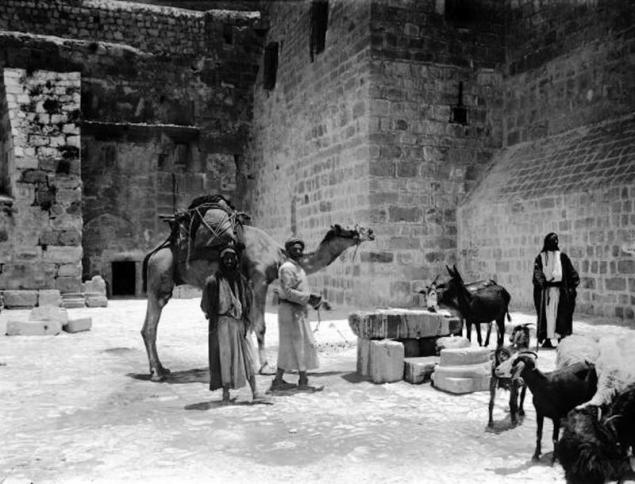
Aerial view of the territory of the Basilica
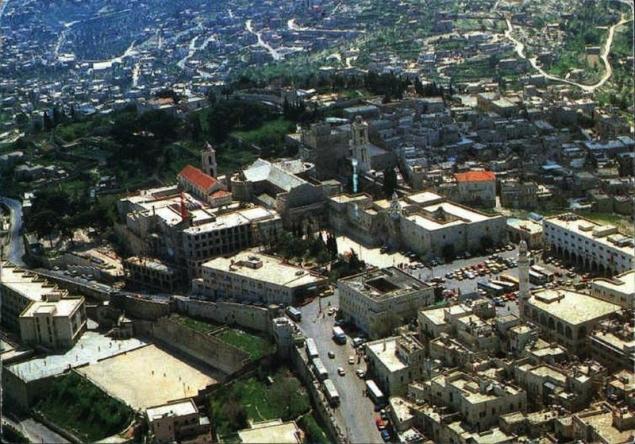
Three-dimensional model of the basilica
The main building of the Basilica was erected by the Greek Orthodox Patriarchate of Jerusalem. It is designed as a typical Roman basilica, with five rows (formed Corinthian columns) and an apse in the eastern part, where there is a sanctuary. The Basilica is rectangular, its length is 53, 9 meters, nave 26, 2 meters wide, and the transept - 35, 82 m. Going into the church, you can see four rows of columns - just 44 - 6 meters high, made of red stone.
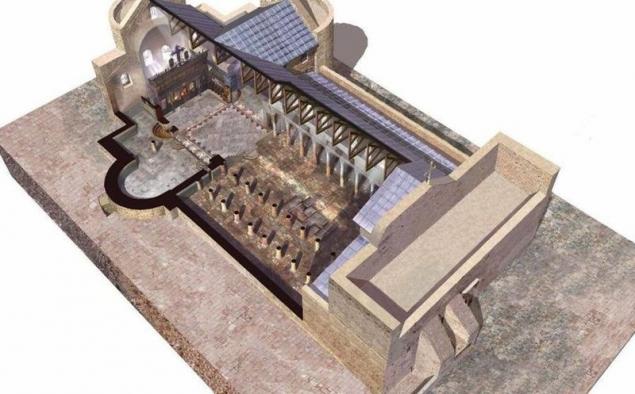
The cross on the roof of the Basilica
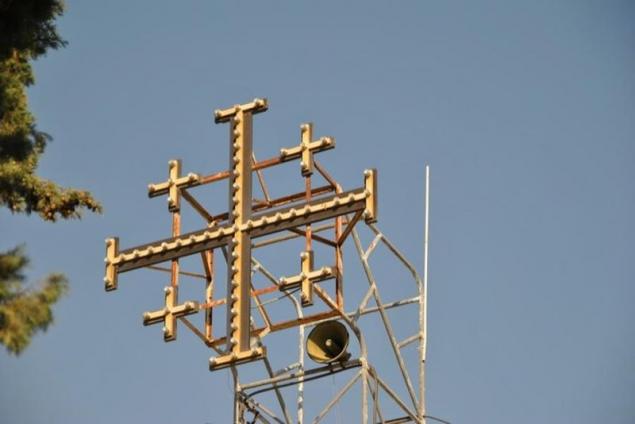
View of the Manger Square
Manger Square - a large courtyard in front of the Basilica of asphalt - a gathering place residents on Christmas Eve, where they sang hymns in the run-up to the midnight service.
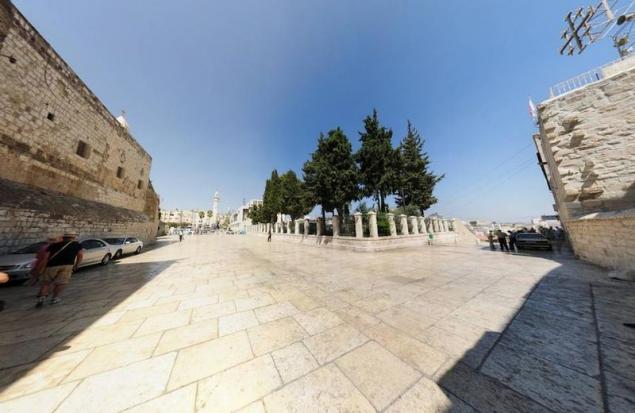
In the basilica can be reached through a very low door, which is called the "door of humility." This is a very small rectangular entrance, created during the reign of the Ottoman Empire to the looters did not import the church carts, as well as to ensure that even the most venerable and important visitors dismounted to get inside. Doorway was significantly reduced compared with the size of the old door, pointed arch which can still be seen at the top.
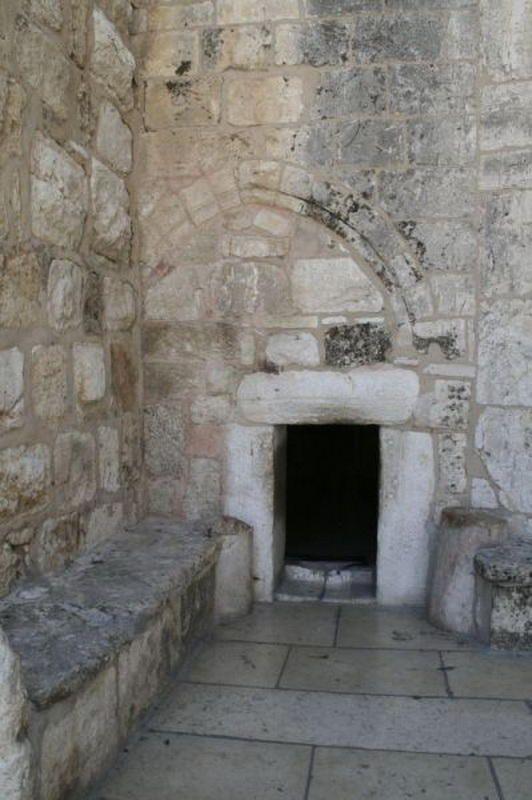
View through the door of humility
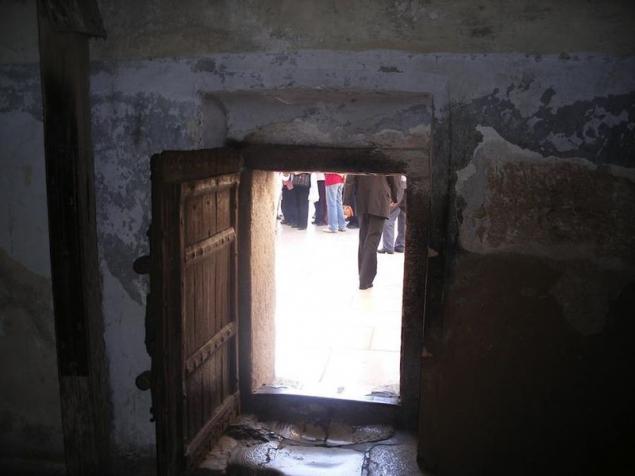
Security room - the first room in the Basilica
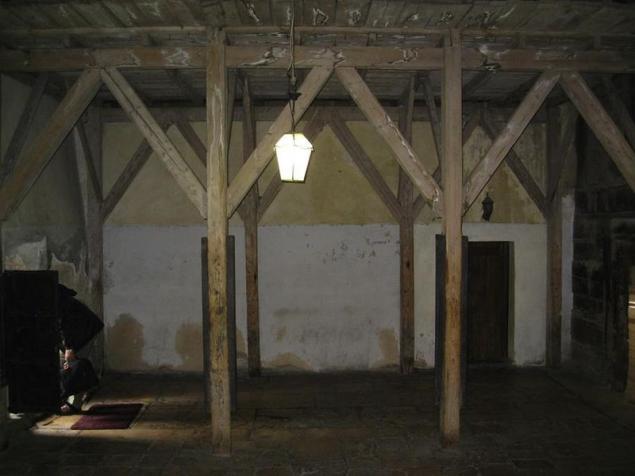
Columns Basilica
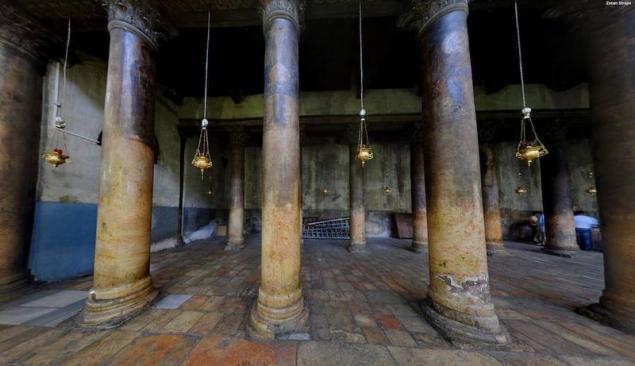
At thirty of 44 columns can be seen drawings Crusaders depicting saints, the Virgin Mary and Infant Jesus, but because of the time and lighting conditions they are difficult to see.

The priest between the columns of the Basilica. The columns are made of polished pink limestone, most of them standing still from the 4th century, from the time Konstantinovskaya Basilica.
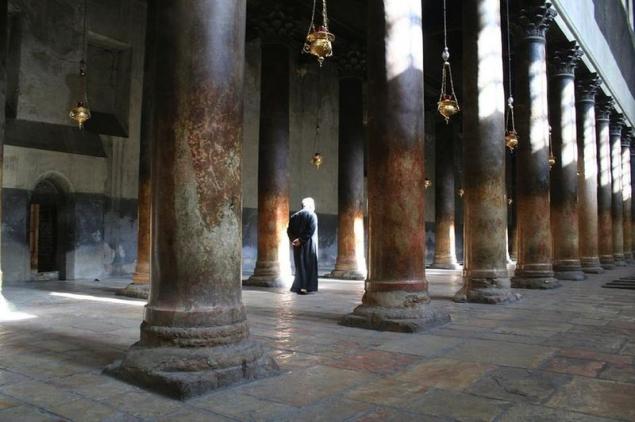
Nave and ceiling
Wide nave remained since Justinian, and the roof dates from the 15th century and in the 19th century, its restoration was carried out. Now this roof is rotten, that threatens the integrity of the entire building. Some beams have been preserved from the 15th century, but because of the holes in the tree dirty water flows directly to the precious mosaics and frescoes. This problem is only getting worse over the years, but the clergy of the Greek and Armenian Orthodox churches, as well as the Franciscan order of the Roman Catholic Church in conflict with each other for decades and have been unable to come to a common plan of action.
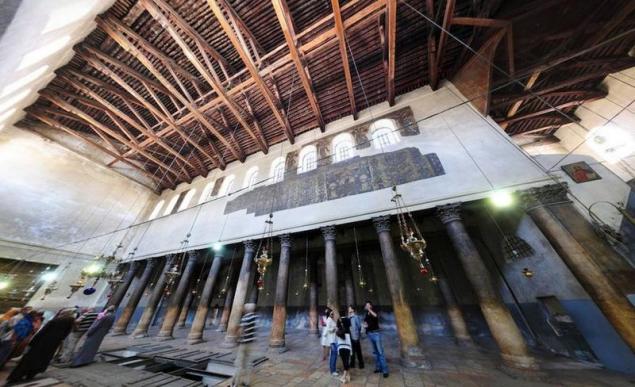
Armenian Church owns the north transept and the altar located there. They also are sometimes the altar of the Greek Orthodox Church and caves. On the north side of the altar is an Armenian altar and the Three Wise Men, and in the northern apse is also an Armenian altar of the Virgin Mary.
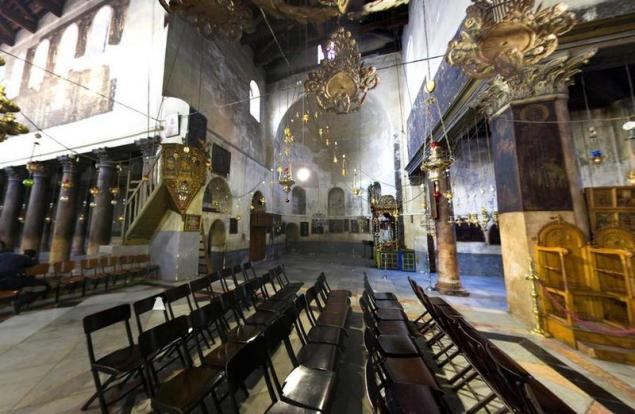
Iconostasises
Iconostasises - it is a wall of icons and religious paintings, separating the nave from the sanctuary of the church. Iconostasis is also called shelf for icons that can be placed anywhere. Iconostasis evolved from Byzantine Templon the 15th century. The main building of the Basilica, including aisles, rows, Katholikon (choir and sanctuary), south transept, and the Altar of the Nativity are under the ownership of the Greek Orthodox Church.
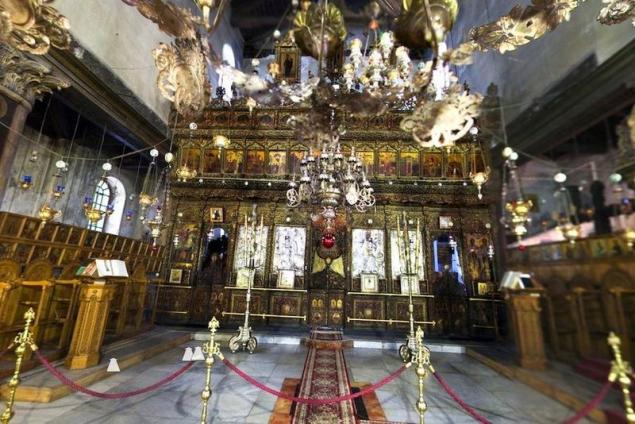
Entrance to the cave under the church, which are its main attraction. In the cave you can enter up the stairs at the altar. It was here, according to tradition, Jesus Christ was born.
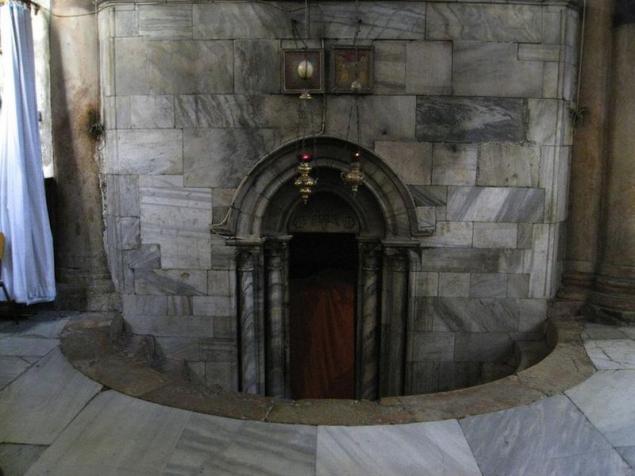
North stairway to the caves.
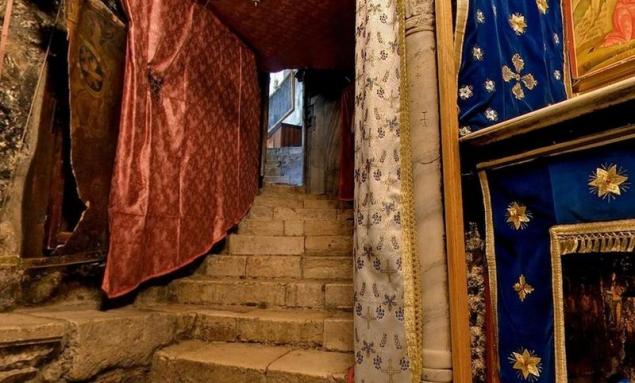
Crèche
According to the Gospel of Luke 2: 7, Mary "laid him in a manger, because there was no room for them in the monastery." Day nursery located in the northern part of the cave, and in front of them - the altar of the Magi who came to Bethlehem with gifts from the East, after they saw the beacon.

In the gospel of the cave is not mentioned, but less than a century later, Justin Martyr and the Gospel of James was told that Jesus was born in a cave. This makes sense, since many homes in the area are still being built in front of the caves. Caves were used for storage and as stables for horses - hence the nursery. At the end of the cave you can see the door to the chapel, the key to which is kept by the Franciscans.
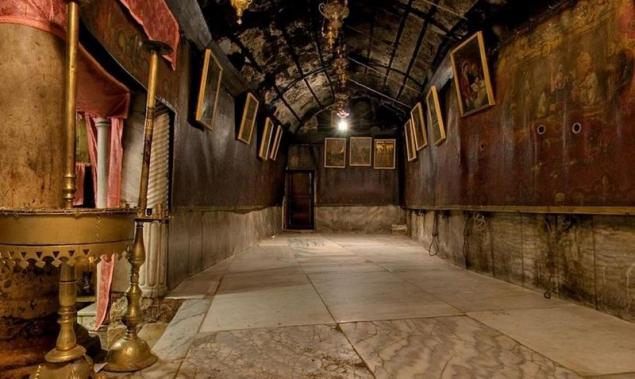
Wall of the cave. All other items of furniture dating from after the fire in 1869, with the exception of the bronze gates in the north and the south entrance to the cave, dating back to the 6th century.
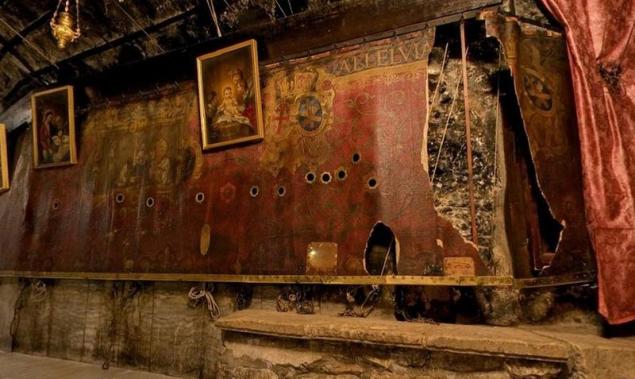
Cave lights lamp 51, 19 of which belong to the Catholics.
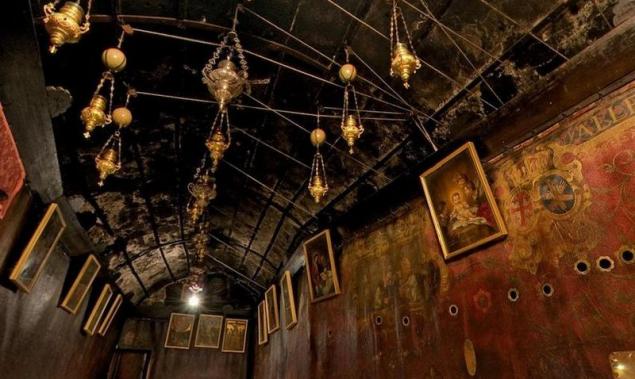
South staircase into the cave.
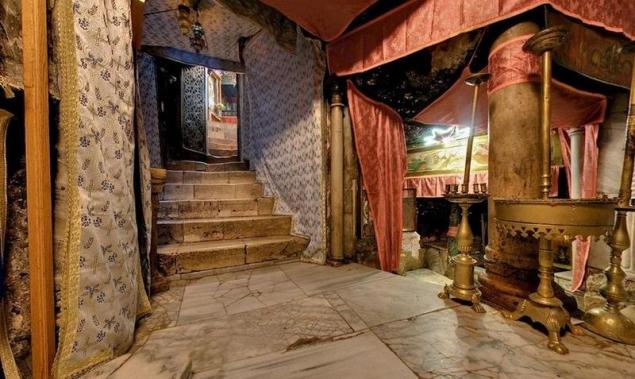
Cave is rectangular in shape: the length of 12, 3 meters and the width - 3, 15 meters.
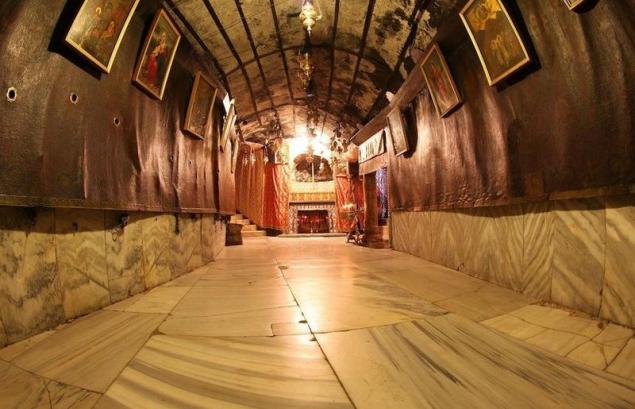
Altar of the star of Bethlehem.
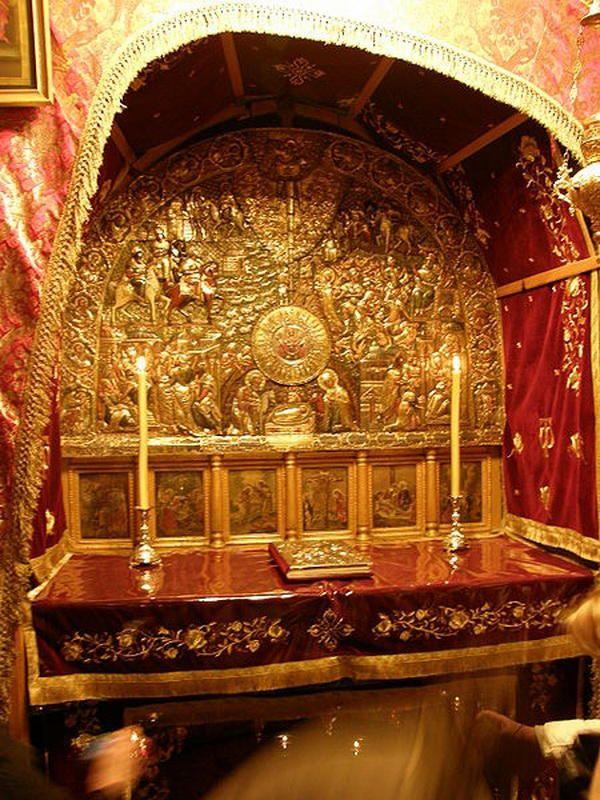
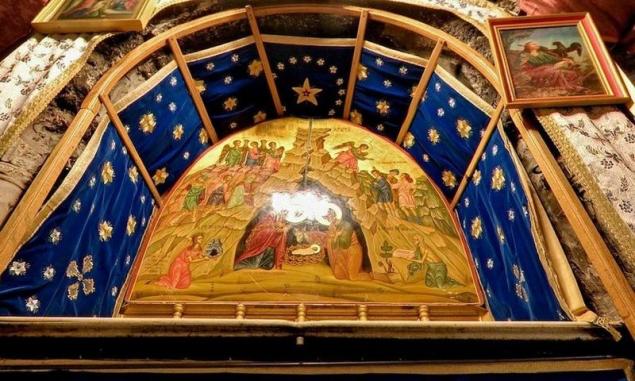
The lower part of the altar
Silver Star on the floor symbolizes the place where, according to tradition, Jesus was born. The floor is paved with marble, and over 15 star hanging lamps (six of them belong to the Greek church, five - and four Armenian - Roman).
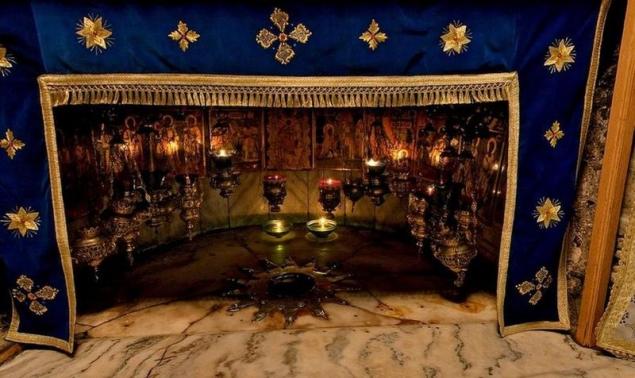
Silver Star has 14 rays.
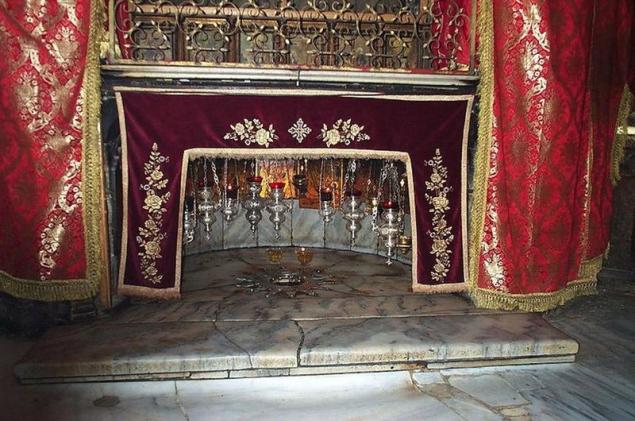
The inscription on the star in Latin reads: "Here the Virgin Mary, Jesus Christ was born - 1717».
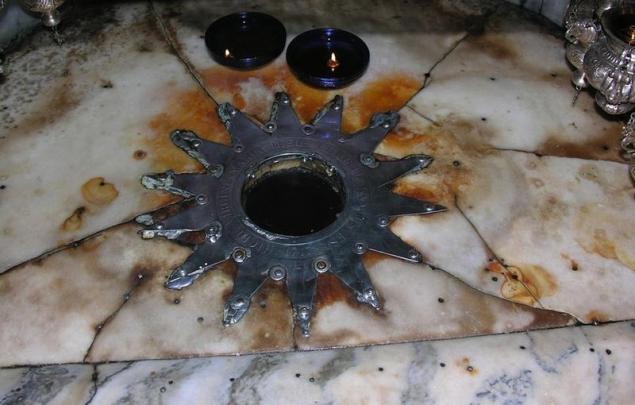
Franciscan courtyard leading to the church of St. Catherine.
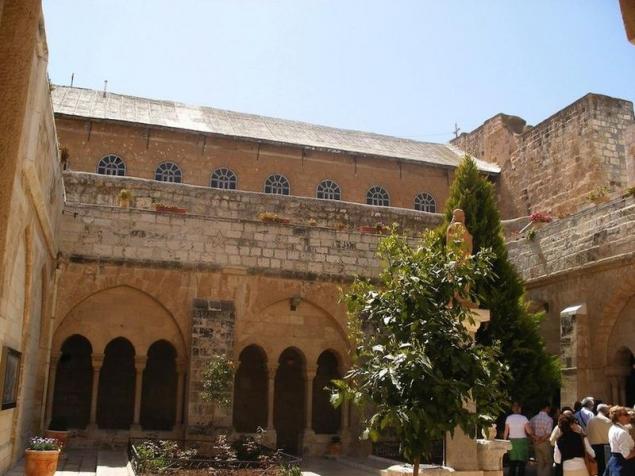
In the church of St. Catherine
The church was built on the spot where Jesus Christ appeared to Catherine of Alexandria and foretold to her by her torment (ok.310 AD). Swat buried Catherine on Mount Sinai. The first mention of the church date back to the 15th century. Most likely, it is built on the site of the Monastery of the Crusades of the 12th century. In addition, at the same place in the fifth century the monastery of Saint James. and united with the monastery chapel of the Crusades of the 12th century, which once stood on this site. Traces of the monastery of the 5th century, which is associated with St. Jerome, is also present here.
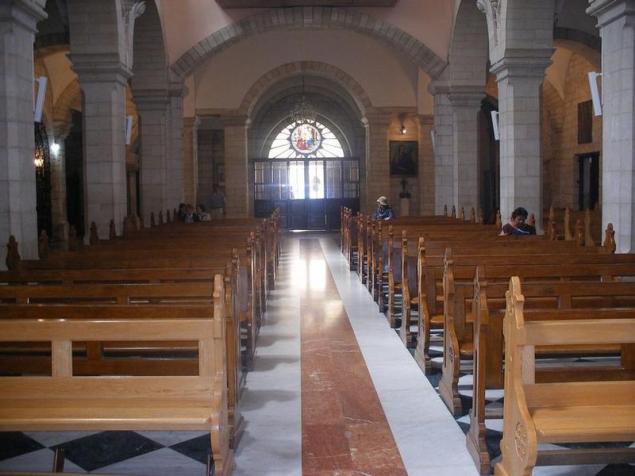
The priest looks at the patio leading to the Church of St. Catherine.
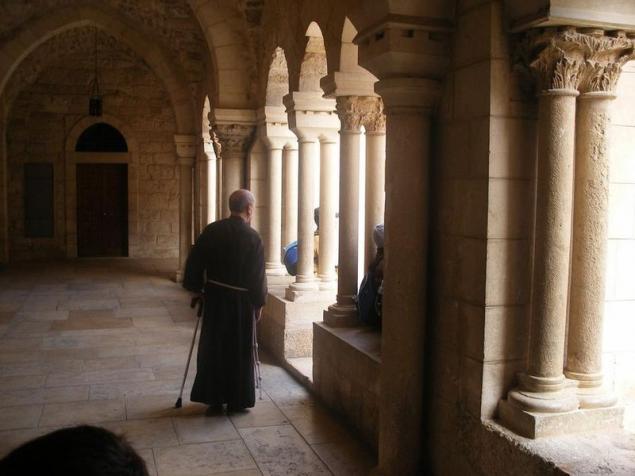
Altar in the church of St. Catherine
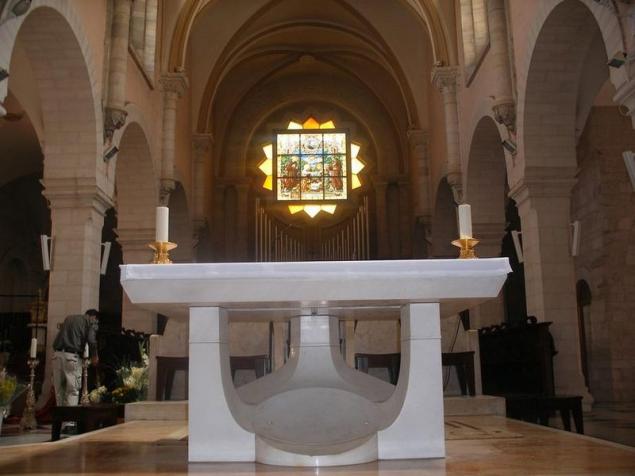
Entrance to the Franciscan monastery and church of St. Catherine.
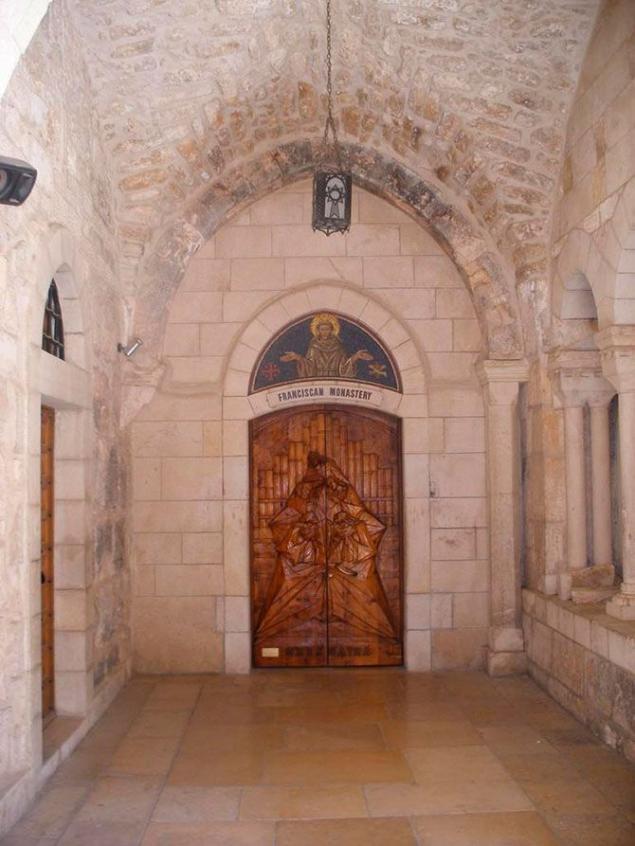
Patio leading to the Church of St. Catherine.
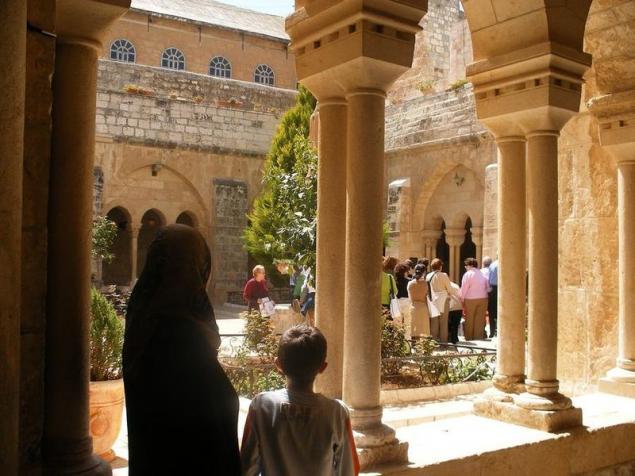
Stained glass window in the church of St. Catherine.
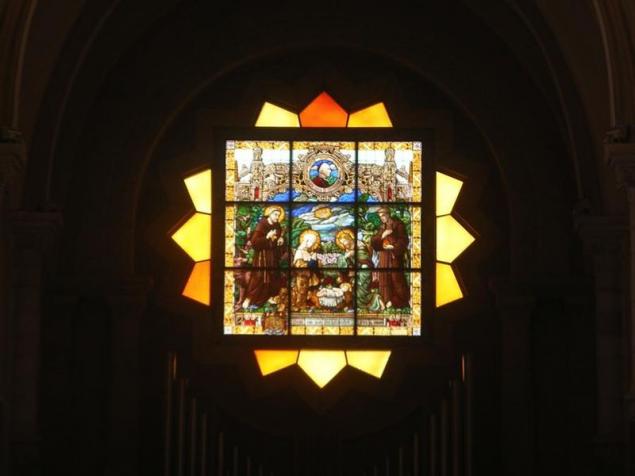
Source: tinepoverish.livejournal.com
But not all have seen these places, and certainly does not happen.
Let us arrange a tour of one of the oldest churches in the world.

Basilica of the Nativity - one of the oldest churches in the world. The building was built over the cave where, according to legend, was born Jesus of Nazareth, but because this place is considered sacred to Christians.
The structure is actually a combination of two churches, and the place itself is located at the bottom of the birth of Jesus - in the cave of the Nativity.
The birth of Jesus is told in the Gospel of Matthew and Luke. Matthew says that Mary and Joseph were from Bethlehem, and then moved to Nazareth because Herod to kill all the babies. And Luke indicates that Mary and Joseph were from Nazareth, and Jesus was born in Bethlehem, while they were in town for a special occasion. Theologians consider these two stories as conflicting, but Matthew is considered more reliable source. However, in both versions, Jesus was born in Bethlehem and raised in Nazareth.
Star of Bethlehem and the altar
In Roman Catholics have a unique Altar in Awe "manger of Jesus." Catholics also set under the altar of the Nativity silver star. To the enjoyment of the nave have the right to both Catholic and Armenians.
1. The area of the Nativity; 2. Gates of humility; 3. Nave; 4. The High Altar and Greek Orthodox Basilica (iconostasis); 5. Stairs to the cave; 6. Cave Nativity; 7. Franciscan monastery; 8. Franciscan yard; 9. Cave of St. Jerome; 10. Church of St. Catherine; 11. The Greek Orthodox monastery; 12. Greek Orthodox yard; 13. Armenian yard; 14. Armenian monastery.

Aerial view of the Basilica of the Nativity in Bethlehem.
Basilica of the Nativity - the oldest still-functioning church in the Holy Land, where, according to legend, Jesus Christ was born. Its construction began in 326 BC The current church was built during the reign of Byzantine Emperor Justinian. In 529, the basilica was severely damaged during the rebellion of the Samaritans. Patriarch of Jerusalem, sent to the aid of St. Sava Justinian, and the architect, sent by the emperor, demolished the church and built the one that stands to this day.

Plaque
Today, the church is under the control of three Christian denominations - the Armenian Church, the Roman Catholic Church and the Greek Orthodox Church.

Black and white photo of an old church.
Powerful external walls of the church, similar to the walls of the fortress, talk about it long and complicated history. For centuries, the church was one of those places for which were constantly at war. It won and defended a variety of military, including Muslims and Crusaders. The facade of the Basilica of the Nativity of Christ surrounded by high walls three monasteries: the Franciscan from the north-east side, Greek Orthodox and Armenian Orthodox from the southeast.

Entrance to the famous Basilica quite nondescript

Aerial view of the territory of the Basilica

Three-dimensional model of the basilica
The main building of the Basilica was erected by the Greek Orthodox Patriarchate of Jerusalem. It is designed as a typical Roman basilica, with five rows (formed Corinthian columns) and an apse in the eastern part, where there is a sanctuary. The Basilica is rectangular, its length is 53, 9 meters, nave 26, 2 meters wide, and the transept - 35, 82 m. Going into the church, you can see four rows of columns - just 44 - 6 meters high, made of red stone.

The cross on the roof of the Basilica

View of the Manger Square
Manger Square - a large courtyard in front of the Basilica of asphalt - a gathering place residents on Christmas Eve, where they sang hymns in the run-up to the midnight service.

In the basilica can be reached through a very low door, which is called the "door of humility." This is a very small rectangular entrance, created during the reign of the Ottoman Empire to the looters did not import the church carts, as well as to ensure that even the most venerable and important visitors dismounted to get inside. Doorway was significantly reduced compared with the size of the old door, pointed arch which can still be seen at the top.

View through the door of humility

Security room - the first room in the Basilica

Columns Basilica

At thirty of 44 columns can be seen drawings Crusaders depicting saints, the Virgin Mary and Infant Jesus, but because of the time and lighting conditions they are difficult to see.

The priest between the columns of the Basilica. The columns are made of polished pink limestone, most of them standing still from the 4th century, from the time Konstantinovskaya Basilica.

Nave and ceiling
Wide nave remained since Justinian, and the roof dates from the 15th century and in the 19th century, its restoration was carried out. Now this roof is rotten, that threatens the integrity of the entire building. Some beams have been preserved from the 15th century, but because of the holes in the tree dirty water flows directly to the precious mosaics and frescoes. This problem is only getting worse over the years, but the clergy of the Greek and Armenian Orthodox churches, as well as the Franciscan order of the Roman Catholic Church in conflict with each other for decades and have been unable to come to a common plan of action.

Armenian Church owns the north transept and the altar located there. They also are sometimes the altar of the Greek Orthodox Church and caves. On the north side of the altar is an Armenian altar and the Three Wise Men, and in the northern apse is also an Armenian altar of the Virgin Mary.

Iconostasises
Iconostasises - it is a wall of icons and religious paintings, separating the nave from the sanctuary of the church. Iconostasis is also called shelf for icons that can be placed anywhere. Iconostasis evolved from Byzantine Templon the 15th century. The main building of the Basilica, including aisles, rows, Katholikon (choir and sanctuary), south transept, and the Altar of the Nativity are under the ownership of the Greek Orthodox Church.

Entrance to the cave under the church, which are its main attraction. In the cave you can enter up the stairs at the altar. It was here, according to tradition, Jesus Christ was born.

North stairway to the caves.

Crèche
According to the Gospel of Luke 2: 7, Mary "laid him in a manger, because there was no room for them in the monastery." Day nursery located in the northern part of the cave, and in front of them - the altar of the Magi who came to Bethlehem with gifts from the East, after they saw the beacon.

In the gospel of the cave is not mentioned, but less than a century later, Justin Martyr and the Gospel of James was told that Jesus was born in a cave. This makes sense, since many homes in the area are still being built in front of the caves. Caves were used for storage and as stables for horses - hence the nursery. At the end of the cave you can see the door to the chapel, the key to which is kept by the Franciscans.

Wall of the cave. All other items of furniture dating from after the fire in 1869, with the exception of the bronze gates in the north and the south entrance to the cave, dating back to the 6th century.

Cave lights lamp 51, 19 of which belong to the Catholics.

South staircase into the cave.

Cave is rectangular in shape: the length of 12, 3 meters and the width - 3, 15 meters.

Altar of the star of Bethlehem.


The lower part of the altar
Silver Star on the floor symbolizes the place where, according to tradition, Jesus was born. The floor is paved with marble, and over 15 star hanging lamps (six of them belong to the Greek church, five - and four Armenian - Roman).

Silver Star has 14 rays.

The inscription on the star in Latin reads: "Here the Virgin Mary, Jesus Christ was born - 1717».

Franciscan courtyard leading to the church of St. Catherine.

In the church of St. Catherine
The church was built on the spot where Jesus Christ appeared to Catherine of Alexandria and foretold to her by her torment (ok.310 AD). Swat buried Catherine on Mount Sinai. The first mention of the church date back to the 15th century. Most likely, it is built on the site of the Monastery of the Crusades of the 12th century. In addition, at the same place in the fifth century the monastery of Saint James. and united with the monastery chapel of the Crusades of the 12th century, which once stood on this site. Traces of the monastery of the 5th century, which is associated with St. Jerome, is also present here.

The priest looks at the patio leading to the Church of St. Catherine.

Altar in the church of St. Catherine

Entrance to the Franciscan monastery and church of St. Catherine.

Patio leading to the Church of St. Catherine.

Stained glass window in the church of St. Catherine.

Source: tinepoverish.livejournal.com



